One of the most interesting things I encountered when I first moved to Arizona was driving down a residential street and seeing front yards full of 3 inches of water. Imagine my surprise when I learned that this was done on purpose to water the front and backyard.
Desert dwellers do like to do things differently so why shouldn’t that apply to how some of us water our landscapes? To view some ‘flooded’ landscapes, please join me for a visit to Double S Farms. Actually, Double S Farms is the home of my mother, my youngest sister & her family and they live only 5 minutes from me.
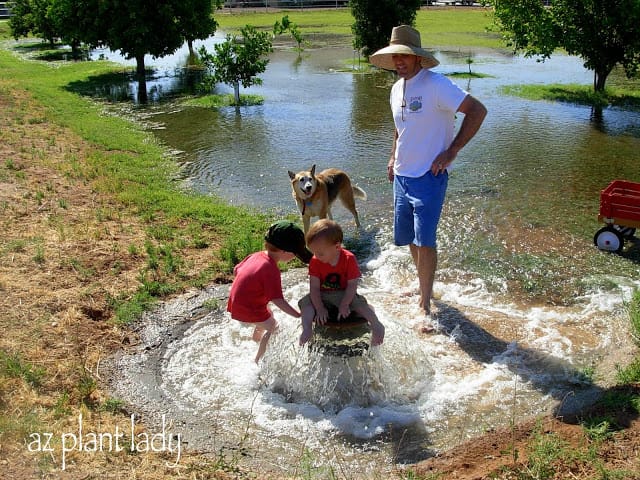
Farmer #1 and Little Farmers #1 & 2 (my nephews) opening up the flood irrigation valve.
Now, Double S Farms isn’t actually a typical farm. It is actually a home on 1 acre, which is called a ‘ranchette’ in our area because it is kind of like a little ranch. Double S Farms has citrus, plum, apple and peach trees as well as a vegetable garden. A chicken coop is currently going up and chickens will be moving in in a few weeks.
*We will be posting visits to Double S Farms in the near future, especially when the chickens move in and to show more cute pictures of Little Farmers #1 & 2.
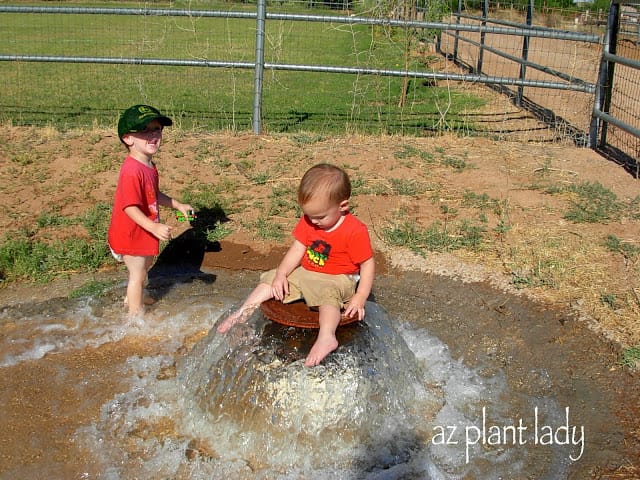
There is nothing more fun then cool water to play in in the middle of summer.
Okay, now back to irrigating – this type of irrigation, known as ‘flood irrigation’ is very inexpensive and therefore cost effective. Our first home in Phoenix had this type of irrigation back in the 1990’s and it only cost us $56 a year to irrigate both our front and backyard – my current garden uses drip irrigation and sprinklers.
Now not all homes in the Phoenix area are irrigated this way. Actually only a very few are and you have to live in certain areas where this is available.
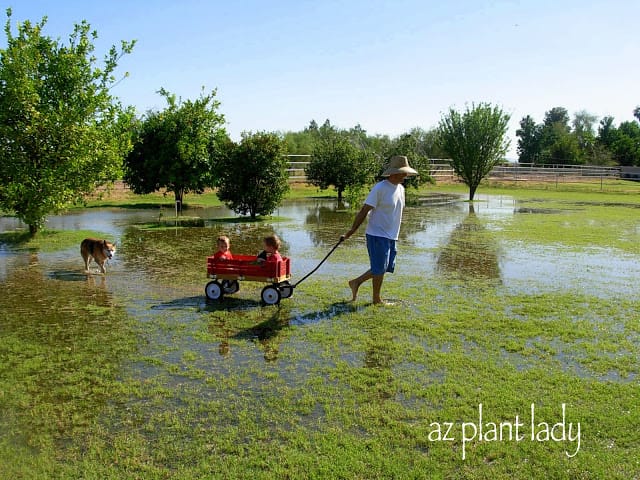
Addy, Little Farmers # 1 & 2 and Farmer #1 going inside after turning on the irrigation valve. In the background are their numerous citrus trees and an apple tree.
In the summertime flood irrigation occurs twice a month and in the winter time only once a month. Water sinks deeply into the soil which makes for deep roots for both grass and trees. It also helps to flush out salts that accumulate in the soil.
Okay, you may be wondering how the water gets from the mountains down into the yard. Well, the water comes from a series of reservoirs that collect water from snow melt and rain. Water users (homeowners) sign up each time that they want water and then only the amount needed is released from the reservoirs through the dams. This water then runs through one of seven major canals where a ‘zanjero’, (Spanish word for ‘water master’), opens a gate from the canal to allow water to flow into smaller lateral waterways that serve certain neighborhoods.
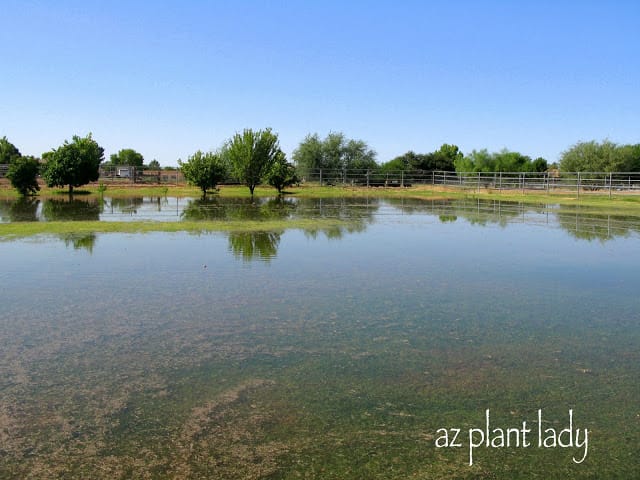
This is how deep the water is when the valve is turned off, about 2 – 3 inches deep. Behind their fence are cattle.
omeowners are told at exactly what day and time they can turn on & off the water. Each property has a certain allotment of water they can use.
I can tell you from experience that it is not fun when you have to get up in the middle of the night in January to open up the flood irrigation valve and then wait to turn it off. I have vivid memories of having to walk through freezing water to turn off the water in the middle of winter. However, nothing can beat how refreshing it is to irrigate during the summer months. Dogs and kids alike look forward to playing in the water.
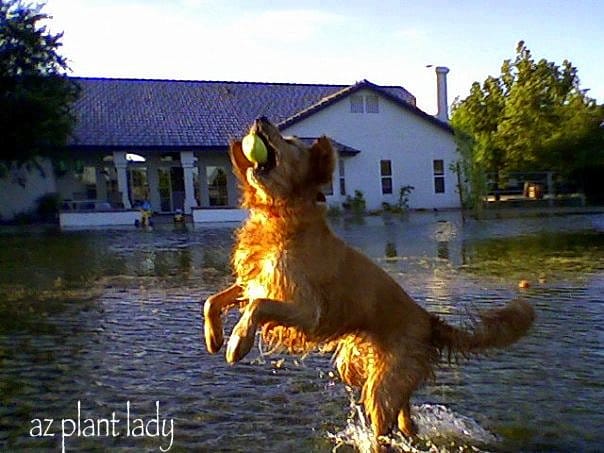
What could be more fun then playing fetch in the water? *Sodapop is the daughter of my dog, Missy.
Many of you were so kind to comment on my previous post “What Planet Have I Landed On?” and had a lot of questions regarding the photo I posted of flood irrigation. I hope this has answered some of your questions. If you would like to learn more, please click here .








